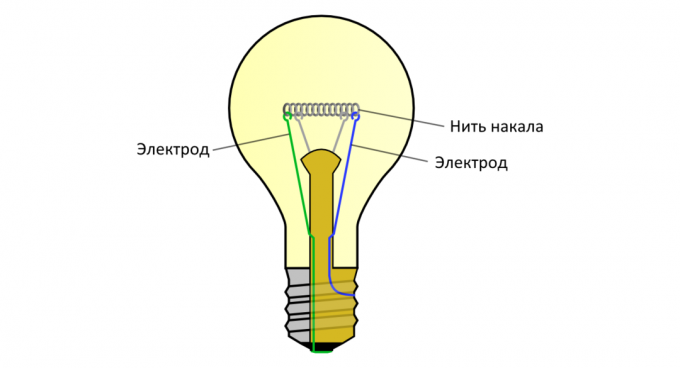How long can last LED lamp actually
Technologies / / December 19, 2019
LED bulbs more expensive than other types of bulbs, but they last longer and use less electricity. However, you should not rely on the word of manufacturers about their durability.
The service life of 10 years - this is a very approximate figure
Often, even the most inexpensive LED lamp manufacturers show duration of up to 10 years, but it is worth noting that such a period is based on a very modest consumption of electricity.
LED lamp can last 10 years if it is to work with a maximum of three hours every day. So a modest amount of consumption for the dwelling is rare today.
Thus, the service life of LED-lamps should be about 11 000 hours. If every day we turn on a lamp for eight hours (one hour in the morning and seven o'clock in the evening), this lamp will serve a little more than three and a half years.
Compared to incandescent lamps, whose service an average of 1000 hours, performance of LED lamps will still look impressive. But on the duration of the LED-lamps is affected by many factors that should be taken into account.
The main problem of LED lamps - circuit and its components
If you look at the interior of the incandescent lamp, it becomes clear how easy it works scheme: Two electrodes are connected to filament, which heats up during the flow through it of the electric current. It is proven more than a hundred years of technology.

LED lamp is much more difficult. In it you will find resistors, inductors, capacitors, and LEDs.
Light-emitting diodes can really work a very long time, but the other components of the circuit may fail much faster, especially in lamps with adjustable brightness. If your lamp is burned out long before 10, 000 hours, most likely, the reason is not in the LEDs themselves.

LED bulbs are gradually fading
Unlike incandescent bulbs, LEDs do not burn out and simply stop working, and their light intensity decreases gradually. The brightness of these lamps varies significantly by the end of their useful life. Manufacturers of LED lamps consist of a total length of service time during which the brightness decreases to 70% of the maximum possible.
For example, if the lamp emits a luminous flux of 800 lumens, its degradation to 570 lumens will be considered the norm within 10,000 hours of service. Brightness below 70% of the maximum index of the lamp is considered unacceptable for correct operation.
High temperatures will shorten the life of the lamp
Electronic devices generate heat, so you have to use fans, radiators or water cooling system. The electronics must be protected from overheating, and LED lamps are no exception.
LEDs can overheat, but more often it happens with the rest of the circuit, sandwiched in a narrow space. The design of the heat lamps is taken into account, but if you insert it in a closed lamp, the lamp is likely to overheat and fail much earlier than the declared period.
The lamps will last longer if you use them properly
LED bulbs exist on the market for so long, so you can have time to check all of the existing scenario of their work and service life. But we can create favorable conditions for their functioning and to avoid unpleasant surprises.
- Do not allow the lamp to overheat. Do not cover them completely, leave openings for ventilation.
- Remember that the LED lamps with very low price components of the scheme are relevant.
- Do not mix different types of lamps in a lamp or chandelier, eg LED-lamps and incandescent lamps. This can lead to overheating.
- Turn off lights when you do not need. LED bulbs consume little electricity, But it is meaningless to create itself an additional cost.



